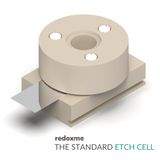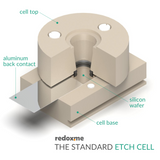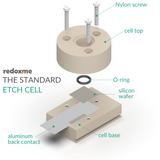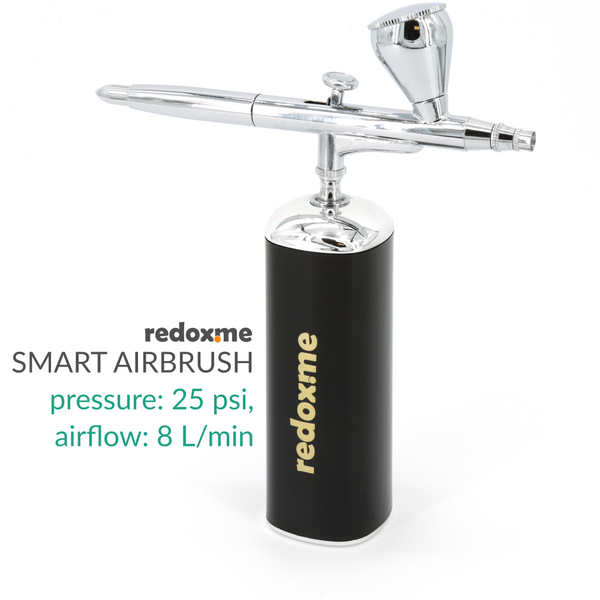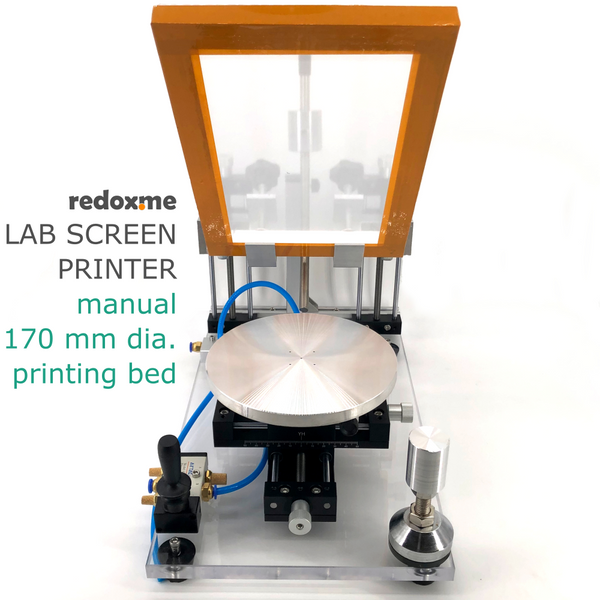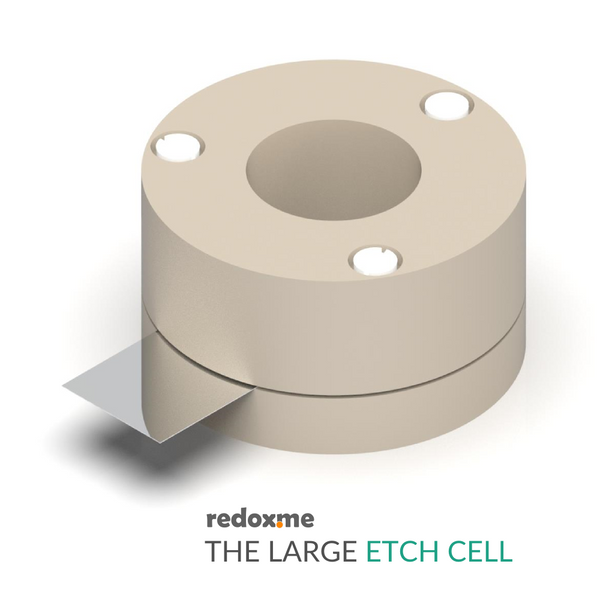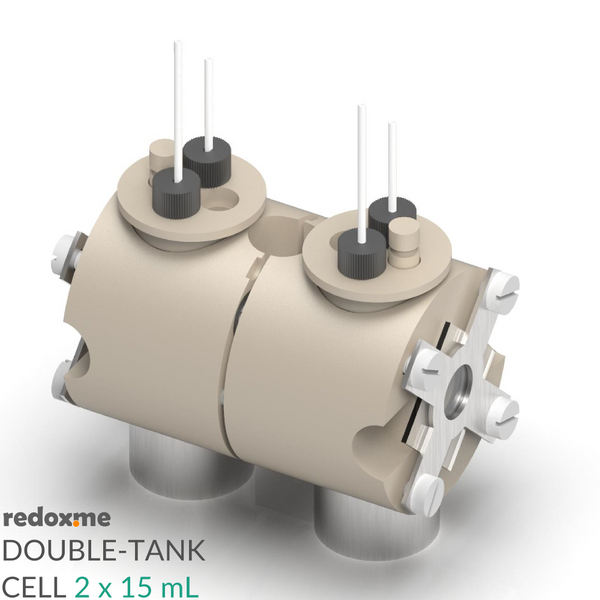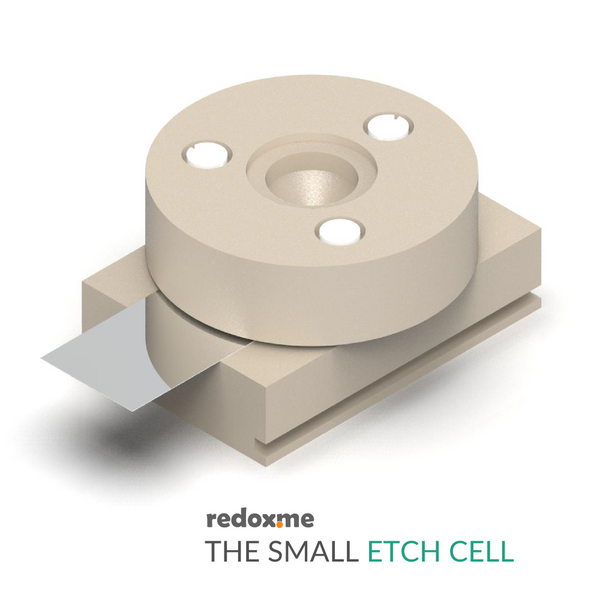The Standard Etch Cell
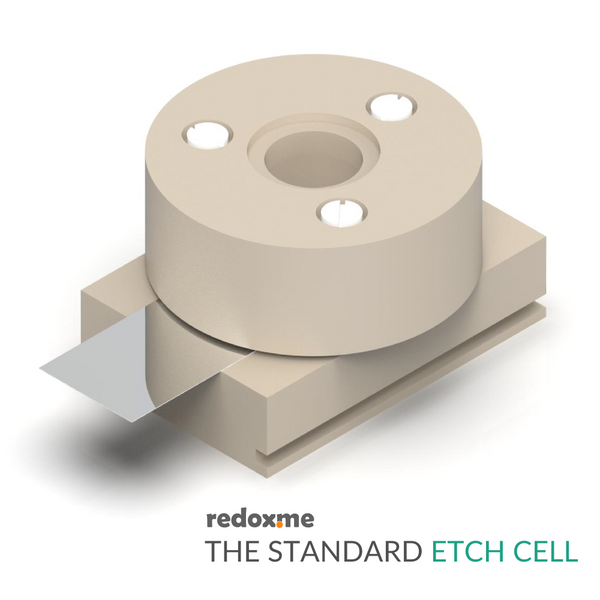
One of the most common applications of an electrochemical etching cell is the preparation of a Nanocrystalline Porous Silicon Layer on a single crystal Si wafer.
Application note
To perform an electrochemical process, a square conducting sample is placed on the cell base, using a piece of aluminum foil as a back contact. The setup is sealed by an O-ring to prevent electrolyte leakage. The cell is filled with an electrolyte, and the wire electrode is immersed in the solution as a counter electrode. An electric current is passed between the aluminum back contact and the wire electrode for a certain amount of time. After the process, the cell elements should be washed several times with ethanol and dried under the nitrogen flow. See the assembly demonstration here.
Specification
nominal exposure area: 1.20 cm2
electrolyte volume: 4.8 mL
minimum sample size: 20 mm x 20 mm
maximum sample width: 31 mm
Intrastat data
HS Code: 85433070
Country of Origin: Sweden
NET weight: 200 g
Product includes
1 x cell base - 0058CPEMASM
1 x cell top - 0060CPEMASM
1 x set of screws - 0057PNYCM
Related products
Spiral Metal Wire Electrode for Etch Cell
Glassy (vitreous) carbon substrates – GC 25/25/custom
This etch cell has been developed based on a design of Prof. Dr. Michael J. Sailor, published in Porous Silicon in Practice: Preparation, Characterization and Applications, Appendix A1. Etch Cell Engineering Diagrams and Schematics.

